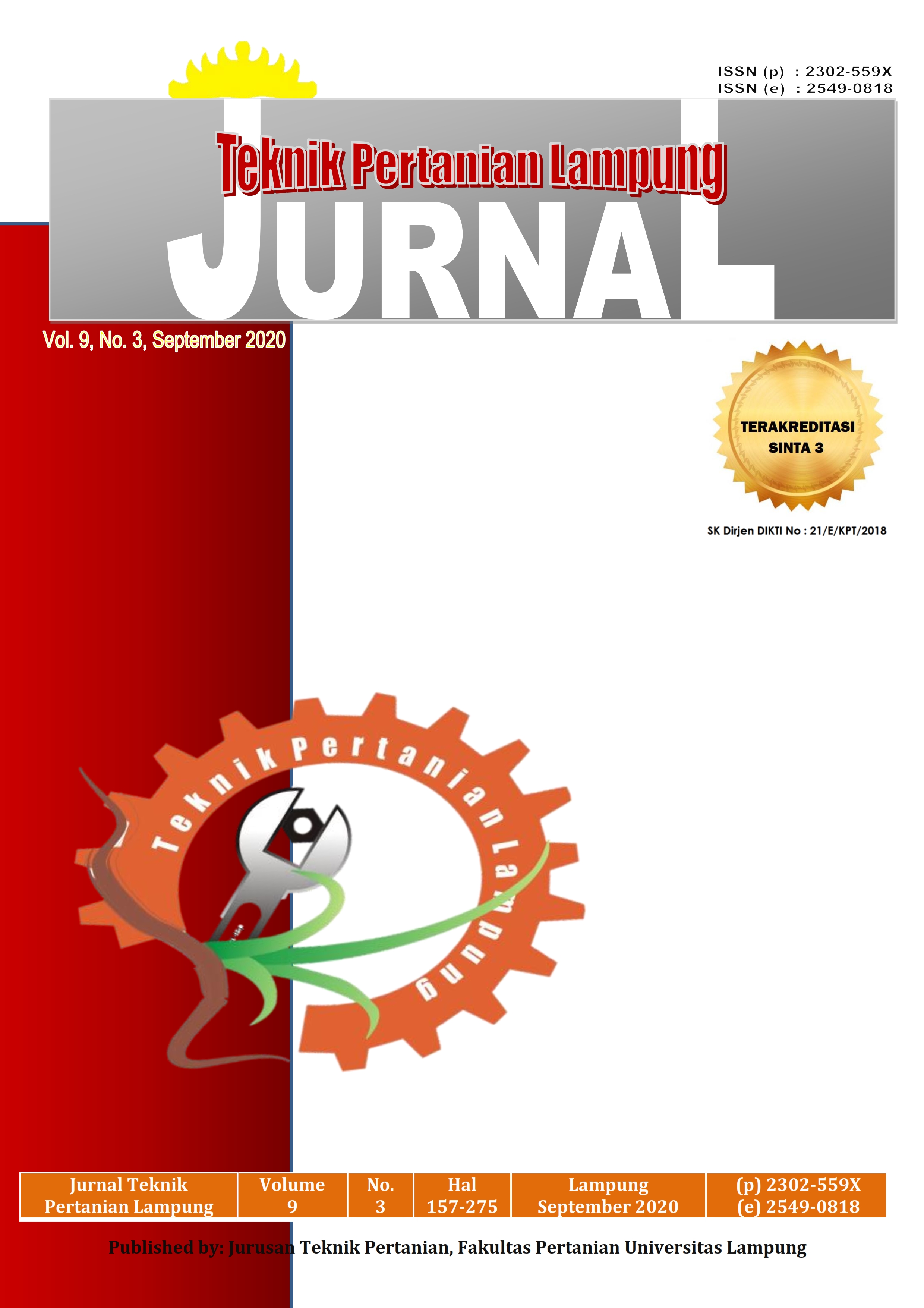STUDI PEREMAJAAN TANAMAN KELAPA SAWIT DI AREAL LAHAN TANAH MINERAL DAN LAHAN GAMBUT
DOI:
https://doi.org/10.23960/jtep-l.v9i3.201-212Abstract
Oil palm trees that are more than 25 years old generally have low productivity of oil palm fruit and will decrease in productivity. For this reason, it is necessary to replant oil palm plants so that their productivity can be maintained high and increased. The aim of this research is to study the technique of replanting oil palm plants in mineral soil areas in the area of Kebun Aek Loba, PT Socfindo, Asahan Regency, North Sumatra Province and in the peatland area of Kebun Mandah Estate, PT Bhumireksa Nusa Sejati, Riau Province. Soil types in the Aek Loba garden area were dominated by mineral soils of the typic hapludult class and made from mother rock tufo toba and young alluvium with a soil pH of 5.5. Mandah Estate plantation area is 100% peat soil with a composition of 74% mature peat (sapric) and 26% medium peat (hemic). Peat is more than 3 meters deep (including very deep peat) and has a crumbly texture so it is easy to erode. The peat soil includes ombrogin peat (formed from large swampy plains), has a high acid content with a pH < 5.5, and has a peat soil density of (1.25 - 1.80) g / cc. Replanting activities in mineral soil areas include ripping, plowing, chipping, holing to planting with a large field capacity (0.04 - 0.72) ha / hour and a total time of completion of work (total field time) of 139.5 hours / ha. Replanting activities in peatland areas include falling, chipping, deboling, holing and planting with a large field capacity (0.06 - 1.25) ha / hour and a total field time of 73.7 hours / ha.
Keywords: field capacity, mineral soils, peatlands, replanting, total field time
References
[BPDP Sawit] Badan Pengelola Dana Perkebunan Kelapa Sawit (2017). Program Peremajaan Perkebunan Kelapa Sawit Rakyat. Pusat Penelitian Kelapa Sawit (IOPRI) [Internet]. [diunduh 2017 Nov 05]. Tersedia pada: http://www.iopri.org/
[BPS] Badan Pusat Statistik (2017). Produksi Tanaman Perkebunan Menurut Provinsi dan Jenis Tanaman Indonesia (2010 – 2015). [internet]. [diunduh pada 2017 Oktober 03]. Tersedia pada : https://www.bps.go.id/linkTableDinamis/view/id/839
Fauzi Y., Widiyastuti YE., Satyawibawa I., Paeru RH. (2012). Kelapa Sawit. Jakarta (ID): Penebar Swadaya
Pahan I. (2008). Panduan Lengkap Kelapa Sawit : Manajemen Agribisnis dari Hulu hingga Hilir. Jakarta (ID): Penebar Swadaya
Risza S. (1994). Kelapa Sawit Upaya Peningkatan Produktivitas. Yogyakarta (ID): Kanisius
Siswadi. (2016). Panduan Praktis Agribisnis Kelapa Sawit Rakyat Berwawasan Lingkungan (dengan Potensi Produksi 42 Ton/Ha/Tahun). Yogyakarta (ID): Deepublish
Sunarko. (2014). Budidaya Kelapa Sawit di Berbagai Jenis Lahan. Jakarta (ID): AgroMedia Pustaka
Downloads
Published
Issue
Section
License
- Authors who publish with this journal agree to the following terms:
- Authors retain copyright and grant the journal right of first publication with the work simultaneously licensed under a Creative Commons Attribution-ShareAlike 4.0 International Lice that allows others to share the work with an acknowledgement of the work's authorship and initial publication in this journal.
- Authors are able to enter into separate, additional contractual arrangements for the non-exclusive distribution of the journal's published version of the work (e.g., post it to an institutional repository or publish it in a book), with an acknowledgement of its initial publication in this journal.
- Authors are permitted and encouraged to post their work online (e.g., in institutional repositories or on their website) prior to and during the submission process, as it can lead to productive exchanges, as well as earlier and greater citation of published work (See The Effect of Open Access).
Jurnal Teknik Pertanian Lampung

JTEPL is licensed under a Creative Commons Attribution-ShareAlike 4.0 International License.

